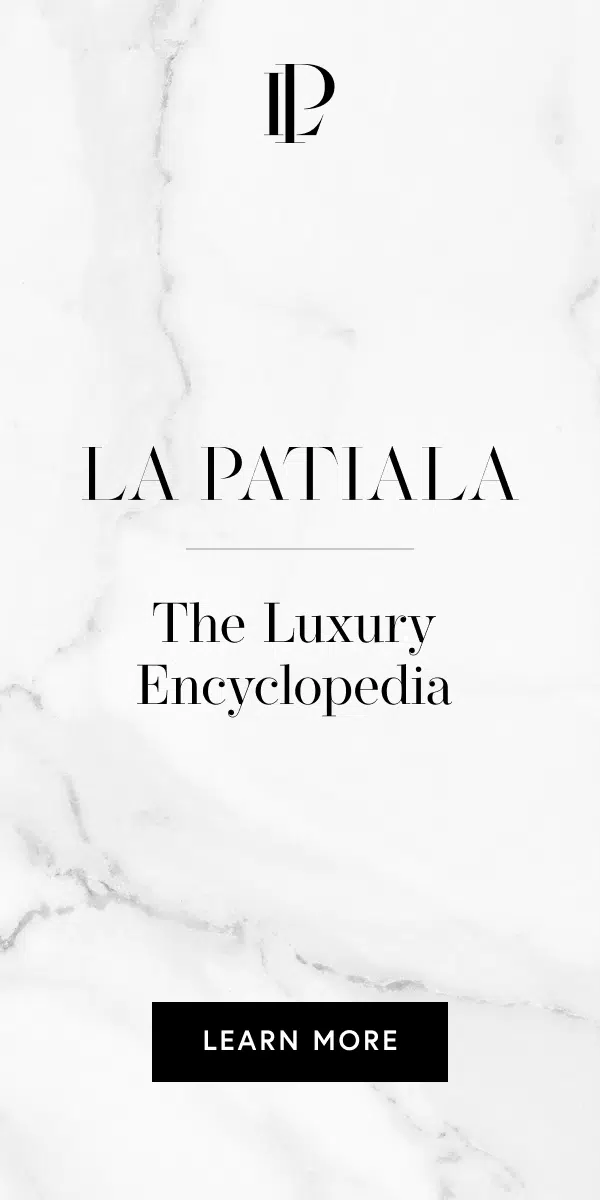How to Choose and Buy an Engagement Ring
Our expert guide walks you through every step of buying an engagement ring so you can shop confidently and actually enjoy the process.
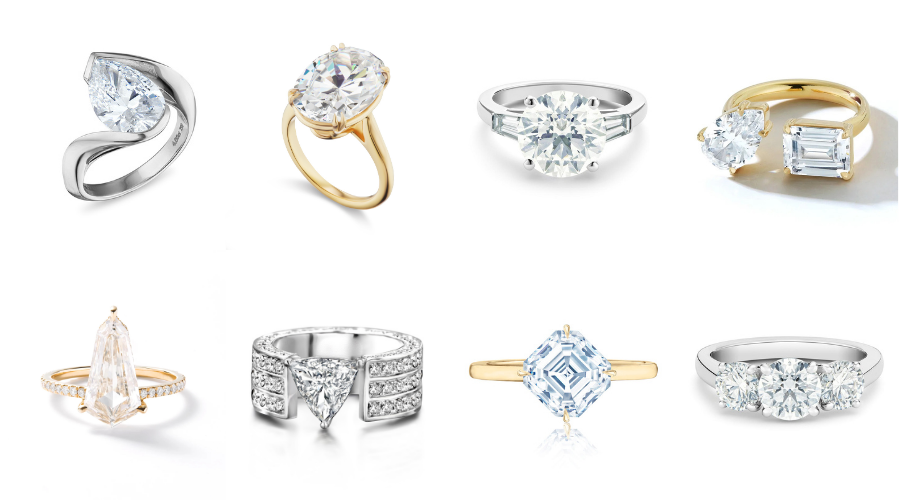
For many people, an engagement ring will be one of the most expensive purchases of their life. Of course, this makes it a fraught and intimidating experience for many people. There are many things to consider when buying an engagement ring, including what gemstone to pick, the quality of the stone, and the setting. Our guide on how to choose and buy an engagement ring answers all of these questions and more. Discover everything you need to know about buying an engagement ring here.
How to Buy an Engagement Ring
Decide on Your Budget
It can be very easy to get swept away looking at rings. Before you go shopping, pick a budget and stick to it. There are a lot of online stores that sell engagement rings, so you can get a good idea of pricing by browsing online. Or, you can go to a jeweler and have an introductory appointment to learn more about prices for the types of rings that interest you before you start really shopping.
Find the Ring Size
If you’re shopping together, get your partner’s ring finger professionally sized. You don’t want to guess if you don’t have to. If you are surprising them, you can ask their friends to help or measure a ring they wear on their ring finger. It’s always better to guess larger than smaller if you are really at a loss.
Many people’s fingers swell and change sizes throughout the day due to factors like heat, humidity, and exercise. If this happens to your partner, consider a larger ring with sizing beads. These little balls are set inside the shank of the ring’s band. They keep the ring secure and prevent it from turning when the finger is at its slimmest, but there’s still space left for the finger to expand.
Pick Your Gemstone
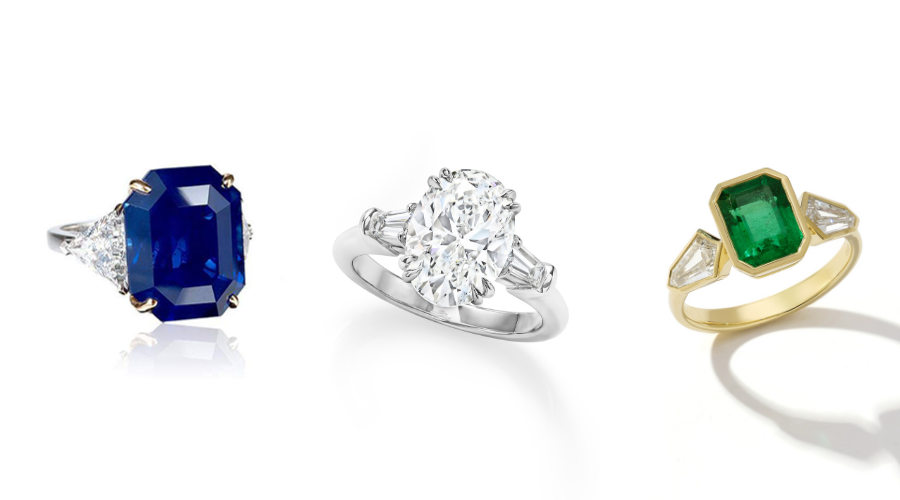
Diamonds are by far the most common gemstones for engagement rings, and for good reason. They are hard, tough, and stable gemstones. Colored gemstones are popular for brides looking for an alternative look. But not all gemstones are created equally. Here are the factors to consider when choosing a gemstone for an engagement ring.
Hardness
The hardness of a gemstone determines its resistance to scratches. Hardness is measured on the Mohs scale, which rates how easily a gemstone can be scratched. Diamond scores a 10 on the Mohs scale, the highest possible score, because only a diamond can scratch a diamond. To put that into perspective, a steel nail measures 6.5 on the Mohs scale. Ruby and sapphire both have a Mohs hardness of 9. Unfortunately, the Mohs scale is not linear. The difference between 10 and 9 is very large, while the difference from 9 to 8 is much smaller. This means that a rating of 9 does not mean ruby and sapphire are slightly less hard than a diamond; it’s a significant difference.
All other gemstones have a Mohs hardness level below 9, and you should use caution when selecting one of these gemstones for an engagement ring because it will go through so much daily wear and tear for years. While emerald is a beautiful gemstone, it only ranks 7.5 to 8 on the Mohs scale, so it is not a great choice for an engagement ring unless you treat it very carefully and place it in a protective setting.
Toughness
The industry describes a gemstone’s resistance to chipping, breaking, and cracking as toughness. Diamond is the toughest gemstone due to its internal atomic structure. Of course, you can damage and fracture any gemstone if hit hard enough or if hit at a certain angle. But a diamond is a great choice for an engagement ring due to its toughness. Other gemstones can vary greatly, and you should discuss their toughness with your jeweler.
Stability
Stability is also important for a gemstone. This measures how a gemstone handles exposure to light, sudden significant temperature changes, humidity, and chemicals. Exposure to light can damage certain gemstones, including pearl, coral, and amber. Chlorine and household cleaners can damage softer stones, such as turquoise. You cannot clean some gemstones, including emeralds, in a jewelry-cleaning solution or ultrasonic machine. Diamonds are very stable gemstones in typical circumstances. However, extreme thermal shock — a sudden change from very hot to very cold temperatures — can damage a diamond. You likely won’t experience this type of temperature shift in daily life unless you live in a very cold climate.
Gemstone Cuts
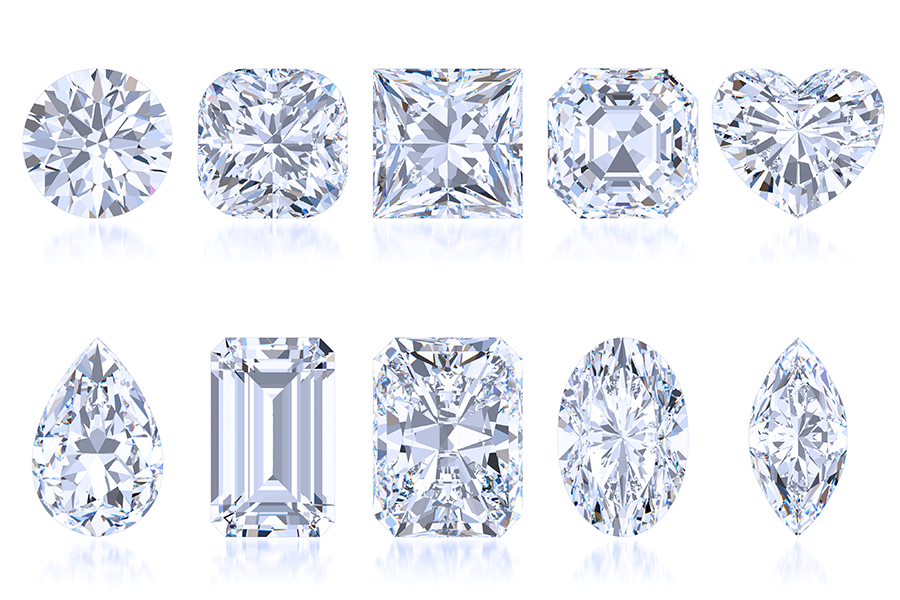
The cut, or shape, of the central diamond or gemstone is the most noticeable part of an engagement ring. Once you select the cut, you can begin shopping for the specific stone you want to purchase. The main shapes are round, oval, square, emerald, cushion, Asscher, octagonal, heart, pear, marquise, and trillion.
The degree of sparkle depends on the cut, including the placement, the type, and the number of facets in the diamond. Some diamond cuts are very sparkly, including the ever-popular round brilliant-cut diamonds, which usually have 57 facets placed to refract as much light as possible, which is what creates the fire inside a diamond. On the other hand, step-cut diamonds, such as emerald- and cushion-cut diamonds, have fewer facets to reflect light, and each facet is longer. Experts describe them as having a mirror effect, which is less sparkly than a brilliant-cut diamond. It’s a different look but is certainly still very beautiful.
How to Pick the Right Diamond for Your Engagement Ring
Natural and Lab-grown Diamonds
Natural diamonds are also called mined diamonds. Whenever you see the word “diamond” alone, it refers to a natural diamond. Until recently, natural diamonds were the only choice for jewelry. However, technology has improved, and there are excellent lab-grown diamonds out there. Lab-grown diamonds are less expensive than natural diamonds, so some people prefer them because they can get a larger stone for the same price. While many people tout the eco-friendliness of lab-grown diamonds, natural diamonds are also eco-friendly and positively impact the local communities where the mines are located. In addition, lab-grown diamonds can have a large carbon footprint; it depends on the energy source used by the factory.
Both lab-grown and natural diamonds mined since 2003 are guaranteed to be conflict-free, thanks to the Kimberley Process, which oversees the diamond supply chain and prevents conflict diamonds from being sold. Lab-grown diamonds have not achieved the same status as natural diamonds, and many, including La Patiala, prefer natural diamonds, especially for engagement rings, because they are such an important, sentimental purchase.
The Four C’s of Diamonds
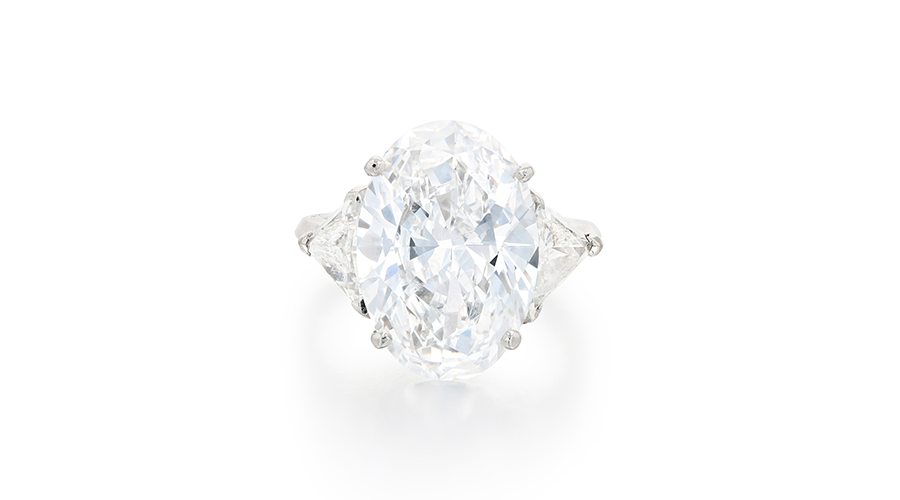
The Four C’s are the industry terms for describing a diamond’s quality. They are carat weight, color grade, clarity grade, and cut grade. Carat weight is the size of the diamond. The visual size of a diamond can change depending on the diamond shape. Some diamond shapes are deeper than others, which makes them appear smaller. Others have larger surface areas. A 2-carat oval or pear-shaped diamond will appear larger than a 2-carat round diamond, for example.
Carat Weight
Carat weight is the size of the diamond. The visual size of a diamond can change depending on the diamond shape. Some diamond shapes are deeper than others, which makes them appear smaller. Others have larger surface areas. A 2-carat oval or pear-shaped diamond will appear larger than a 2-carat round diamond, for example.
Color
White diamonds are graded from colorless to colored on a scale that ranges from D (colorless) to Z (light color). The color grade refers to the lack of color in a diamond. Fancy-colored diamonds, including pink, blue, red, orange, green, and yellow, are graded on a different scale that values color saturation. The highest quality colors for white diamonds are D, E, and F, which means the diamond is colorless. Near Colorless diamonds are G, H, I, and J. We don’t usually recommend diamonds above the color I for engagement rings as the faint yellow or brown color becomes noticeable.
Clarity
Clarity describes the internal structure of the diamond, specifically inclusions and blemishes. The highest clarity grade is flawless, which is a very rare rating meaning it has no inclusions or blemishes visible under 10x magnification. Internally flawless means there are no inclusions under 10x magnification, and it’s also uncommon. More common but still excellent clarity grades are very, very slightly included (VVS), which is broken down further into VVS¹ and VVS². These diamonds have slight inclusions that are difficult to see under 10x magnification. You will not be able to see these inclusions with the naked eye.
Very slightly included (VS) diamonds are also broken into VS¹ and VS². Here, you can see minor inclusions under 10x magnification. Slightly included (SI¹ and SI²) diamonds have noticeable inclusions, and you can likely see them with the naked eye. Included (I¹, I², and I³) diamonds have visible inclusions. We recommend VVS² and above.
Cut
The cut grade does not refer to the shape of the diamond but rather to the quality of the cutting. The cut determines the beauty of the diamond, as well as how well light reflects, which is what gives a diamond its sparkle. There are five grades; the finest cut is excellent, and the worst is poor.
Which “C” Matters the Most?
If you are sticking with a budget, it’s likely impossible to get the highest grades for everything. You have to pick what matters most. If you want a large stone, you’ll prioritize carat weight over the other factors. If you want a colorless diamond, you might have to sacrifice size. A jeweler once told me that they think the color is the least important because most people do not keep their rings clean. Even a D diamond can look like an H diamond when it is covered in hand lotion, dirt, and daily grime.
Get a Diamond Report
Whatever diamond you choose, be sure that you get a certificate from an accredited laboratory, such as the Gemological Institute of America or the International Gemological Institute. This report will certify that you have a natural or lab-grown diamond; describe the carat weight, color grade, clarity grade, and cut grade; and have a map of any inclusions. The diamond will have a laser-inscribed number on the girdle that matches the report. Ask the jeweler to confirm the diamond’s inscription matches the report before you purchase it.
Engagement Ring Styles
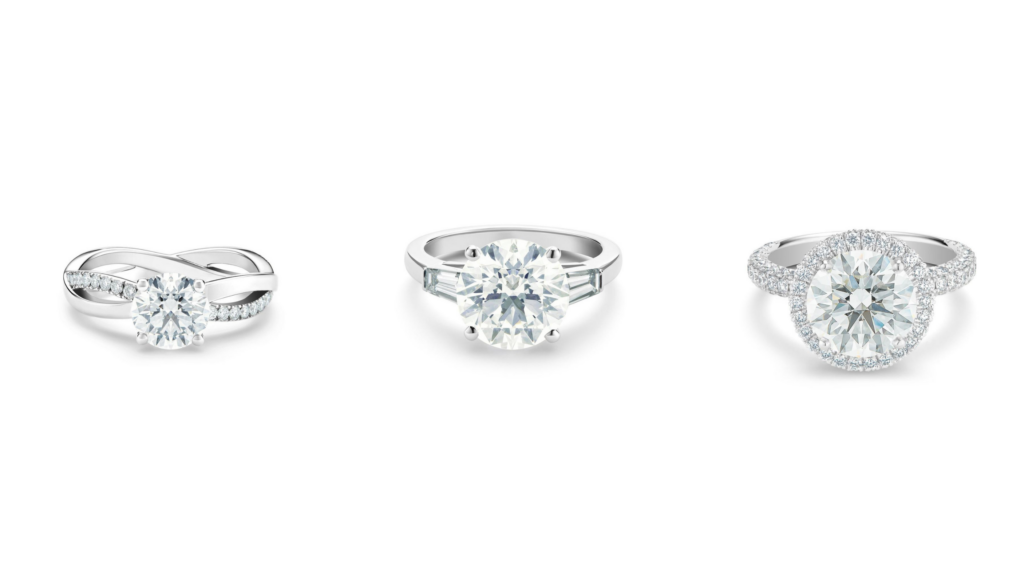
Once you’ve picked your gemstones, you can look at the different styles of engagement rings. Consider what type of jewelry your partner typically wears. If they wear minimalist jewelry, they’ll likely want a simple engagement ring. If they love vintage jewelry, they might want something with a more intricate design. Remember, your partner is the one wearing the ring, so it should suit their style and preferences.
A solitaire is the most popular type of engagement ring. This style highlights a central stone and is a great choice for minimalists or people who want a ring that will go with pretty much any other type of jewelry. Three-stone rings are also popular. True to their names, they feature three gemstones side by side. The central stone is usually larger, and the other two are smaller. However, they are a significant part of the design and are not the same as side stones. Engagement rings with side stones have a central stone and two smaller stones that flank it. These side stones are typically integrated into the band of the ring.
Ring Metal
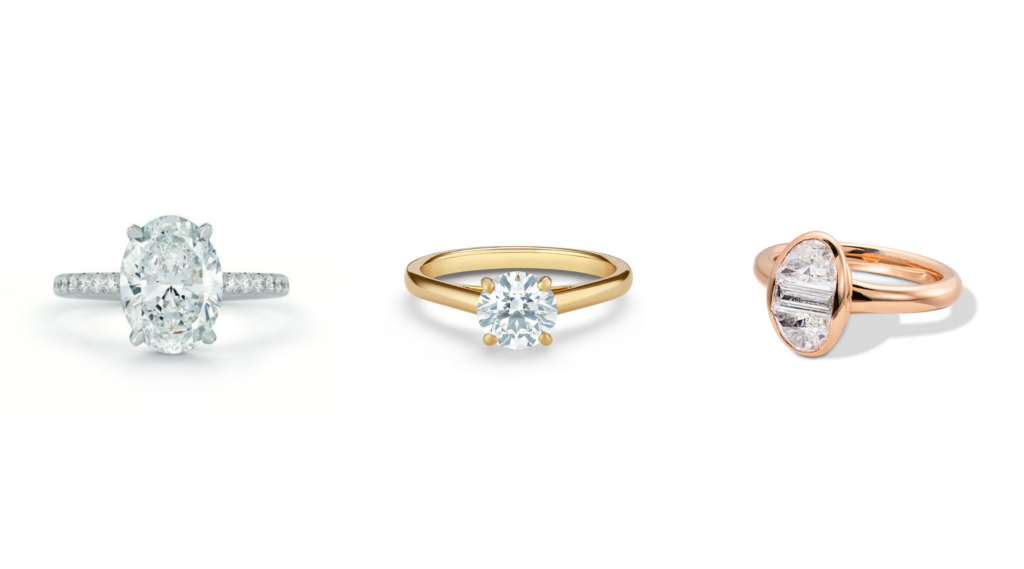
The metal you choose for an engagement ring will dramatically impact the final look. The most popular metal is gold, which comes in yellow, white, and rose hues. Platinum has a silvery-white color and is the hardest metal used in jewelry. This means it’s more durable and scratch-resistant than gold, so many people choose platinum over white gold if they like that color. In addition, white gold is made by blending yellow gold with different alloys. So it doesn’t have the same pure silvery-white hue that platinum has. Many jewelers will rhodium coat white gold to maintain the color. This plating wears off over time and will need to be redone, or the metal might get a warmer, more yellow color. Palladium is becoming more popular as a less expensive alternative to platinum.
Setting
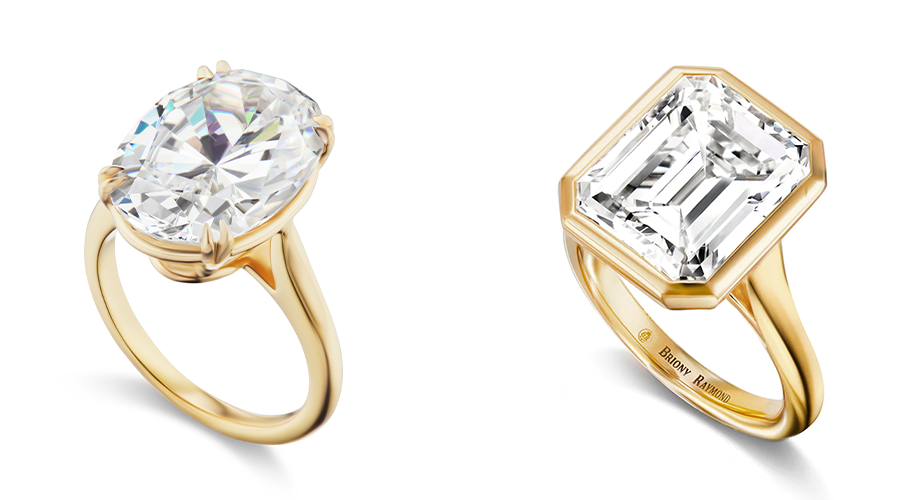
Don’t overlook the ring’s setting, which is what secures the ring to the band. Many rings are very simple with prong settings. These prongs hold the gemstone in place. But prongs come in different shapes and sizes, and they can really affect the final appearance of the ring. In addition, the number of prongs differs depending on the gemstone’s cut. Be sure that the prongs securely hold the gemstone in place. Another setting is the bezel. This encircles the gemstone in a thin band of metal. It’s less popular for engagement rings but has a unique look.
Halo settings surround the central stone with small pavé diamonds or gemstones. This is a way of making the center stone look larger, but stick to one halo. Multiple halos can detract from the beauty of the stone. Toi et Moi rings have two gemstones and a unique design that wraps around the finger. “Toi et moi” means “you and me” in French, and it symbolizes your love. Cathedral-style rings have intricate designs that turn the setting itself into an eye-catching part of the ring. They’re best used for solitaire rings. Some designs use diamonds and gemstones to create more of a designed look around the entire ring, like this Antique Swirl ring from Ashley Zhang, which has diamond-set crescent moons that flank the center stone.
Don’t Forget the Wedding Band
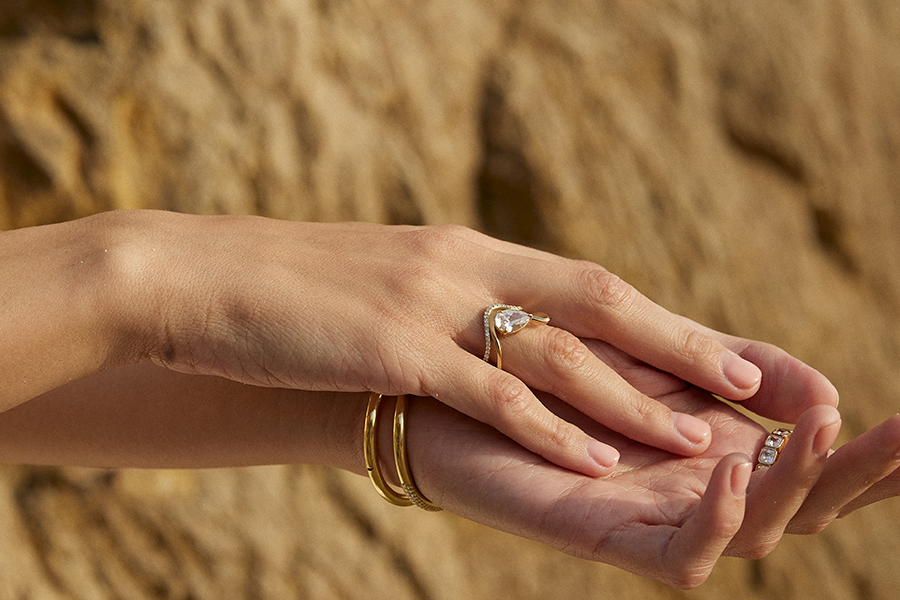
Many people forget to consider how the wedding band will look with the engagement ring. It’s a great idea to try on the engagement ring with the type of wedding band you are leaning toward before making a final decision. Some things to consider are how the diamond cut will sit with a wedding band. A longer diamond cut, like a marquise or emerald cut, will take up more space on the finger and push the wedding band down unless it can fit underneath the stone.
Larger wedding bands, like eternity bands, take up more space on the finger and push up the engagement ring toward the knuckle. If you have a really beautiful engagement ring, consider a more modest wedding band that doesn’t detract from the engagement ring. Some brides who want significant diamond wedding bands wear them on their right ring finger. That way, they get the sparkly wedding band without it clashing with their engagement ring.
Of course, there are designers who create unique engagement and wedding rings designs that are meant to go together. The above Katkim ring is a great example of how design can bring together two different looks in a harmonious way.
Insure the Ring
You should insure the ring as soon as you buy it. Your existing insurance policy most likely does not cover it. While you could add the ring to your homeowner’s policy, we recommend that you purchase a separate policy through a specialty jewelry insurance company. Some insurance policies replace the ring in kind with a similar ring. While others will give you the cash value of the ring. Be sure to think about what would work best for you.
Now that you have all the information you need, you can find and buy your dream engagement ring with confidence.

